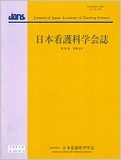Japanese
English
- 販売していません
- Abstract 文献概要
- 参考文献 Reference
要旨
目的:本研究の目的は,慢性期統合失調症患者の日中の身体活動と睡眠指標の関連を明らかにすることであった.
方法:対象者は慢性期統合失調症入院患者27名(男性17名,女性10名,平均年齢58.3±11.6歳)であった.客観的睡眠指標として小型体動計を用いて,総睡眠時間(TST),入眠潜時(SL),中途覚醒時間(WASO)および睡眠効率(SE)を評価した.また,主観的睡眠指標としてピッツバーグ睡眠質問票(PSQI)を実施した.身体活動指標は歩数を採用し,一軸加速度計を用いて客観的睡眠指標とともに1週間測定した.
結果:歩数は,SE(r = .629, p < .01)およびTST(r = .406, p < .05)と有意な正の関連が,またWASO(r = -.615, p < .01)と有意な負の相関関係が認められた.一方,歩数とPSQIスコアに関連は見られなかった.
考察:身体活動の多い統合失調症入院患者は客観的睡眠指標が良好であり,身体活動を高めることが睡眠の改善に結びつく可能性が示唆された.
Purpose: The purpose of this study was to examine the correlations between daily physical activity and objective/subjective sleep variables in schizophrenic patients.
Methods: Twenty-seven schizophrenia patients (male 17, female 10, mean age: 58.3 ± 11.6 years, no change in medicine for one month of the study) were evaluated with regard to their physical activity and objective sleep variables for one week. Total sleep time (TST), sleep latency (SL), waking after sleep onset (WASO), and sleep efficiency (SE) were determined by wrist actigraphy. Daily physical activity (steps per day) was assessed with the help of a waist pedometer. Subjective sleep quality was also assessed using the Pittsburgh Sleep Quality Index (PSQI).
Results: Physical activity showed significant correlation with SE (r = .629, p < .01), TST (r = .406, p < .05), and WASO (r = -.615, p < .01). On the other hand, there was no correlation between physical activity and PSQI score.
Conclusion: Our results suggest that objective sleep quality index in schizophrenia inpatients may be more effectively improved by increasing the amount of daily physical activity.
Copyright © 2019, Japan Academy of Nursing Science. All rights reserved.


